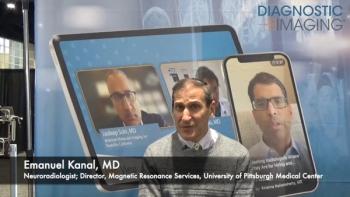
FDA Clears AI Software for Liver Attenuation on Abdominal CT
The AI-enabled HealthFLD software demonstrated a 77.8 percent sensitivity rate and a 93.2 percent specificity rate for diagnosing moderate hepatic steatosis on contrast-enhanced CT scans in a recent study of over 2,900 patients.
The Food and Drug Administration (FDA) has granted 510(k) clearance for HealthFLD, an artificial intelligence (AI)-powered software, which provides automated liver attenuation analysis based on contrast and non-contrast computed tomography (CT) scans.1
In a 2023 retrospective study that examined the use of HealthFLD for detecting moderate hepatic steatosis on contrast-enhanced CT scans, researchers noted a 77.8 percent sensitivity rate and a 93.2 percent specificity rate at less than 80 HU.2
“We are proud to offer HealthFLD as the third product of Nanox AI’s suite of cutting-edge, AI-powered population health solutions designed to confront chronic diseases of great public health concern head-on and potentially improve health outcomes,” said Erez Meltzer, the chief executive officer of Nanox.
References
1. Nanox. Nanox receives FDA clearance for HealthFLD, an advanced AI-based software empowering clinicians in assessment of fatty liver. GlobeNewswire. Available at:
2. Pickhardt PJ, Blake GM, Kimmel Y, et al. Detection of moderate hepatic steatosis on portal venous phase contrast-enhanced CT: evaluation using an automated artificial intelligence tool. AJR Am J Roentgenol. 2023;221(6):748-758.
Newsletter
Stay at the forefront of radiology with the Diagnostic Imaging newsletter, delivering the latest news, clinical insights, and imaging advancements for today’s radiologists.




























